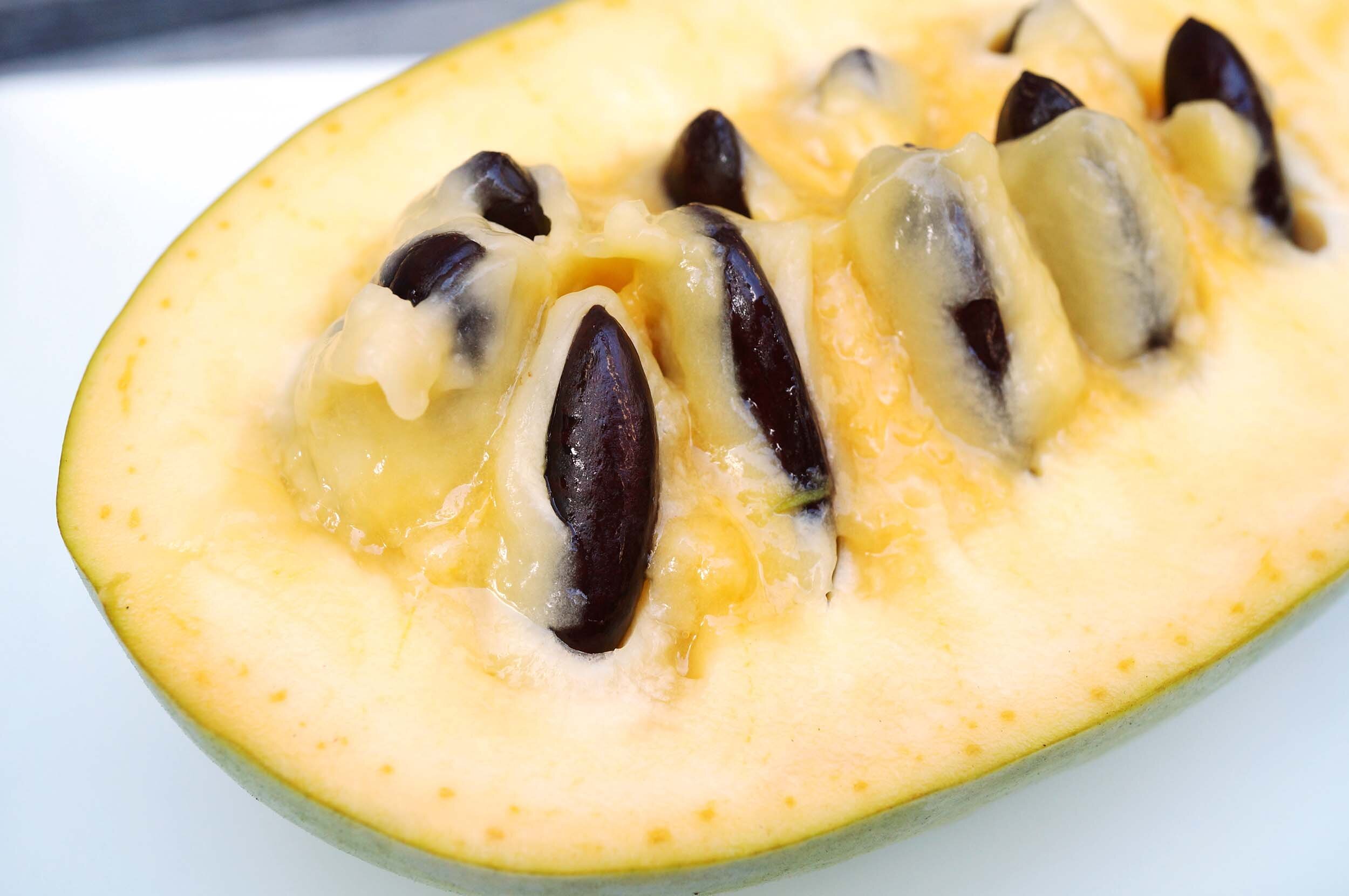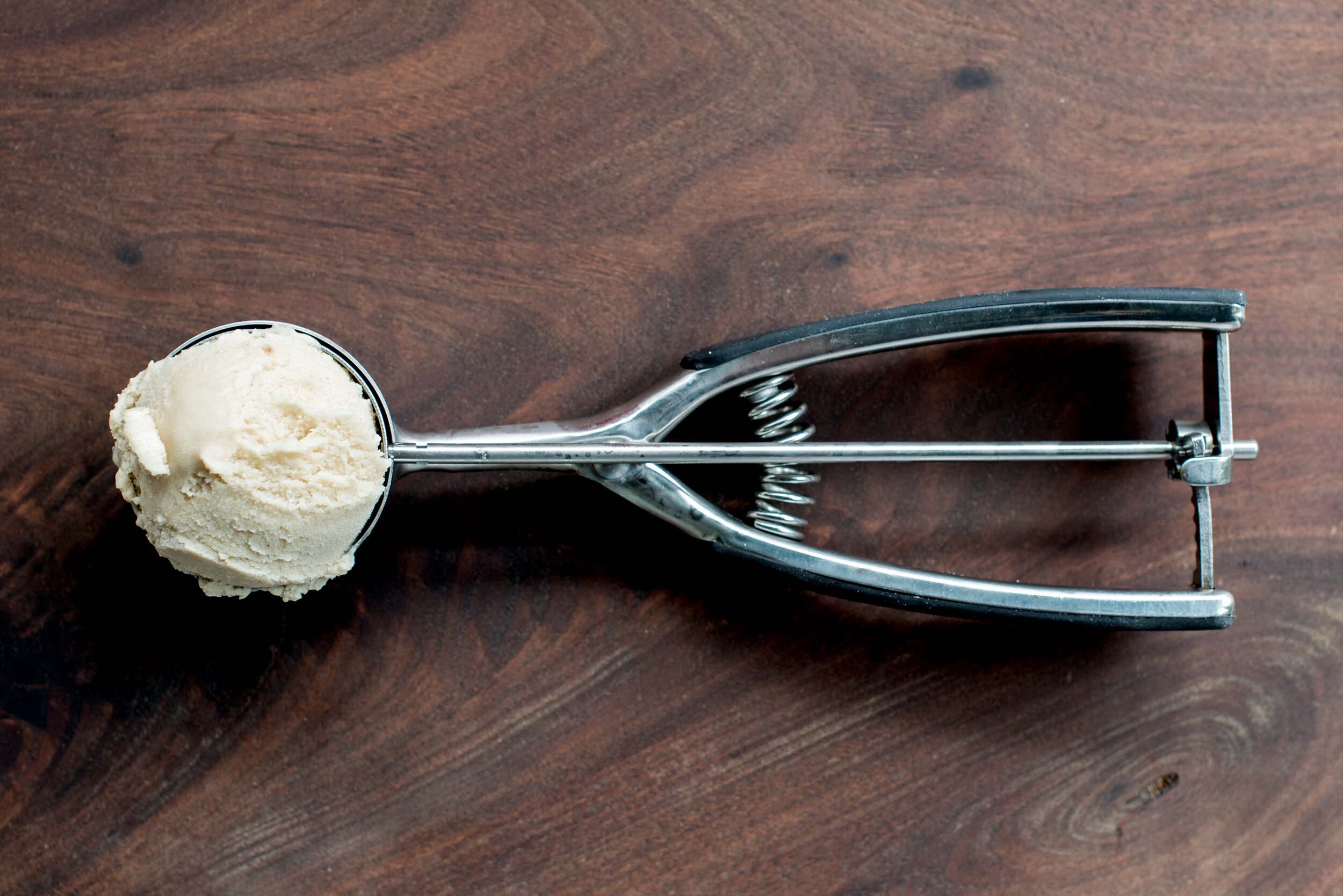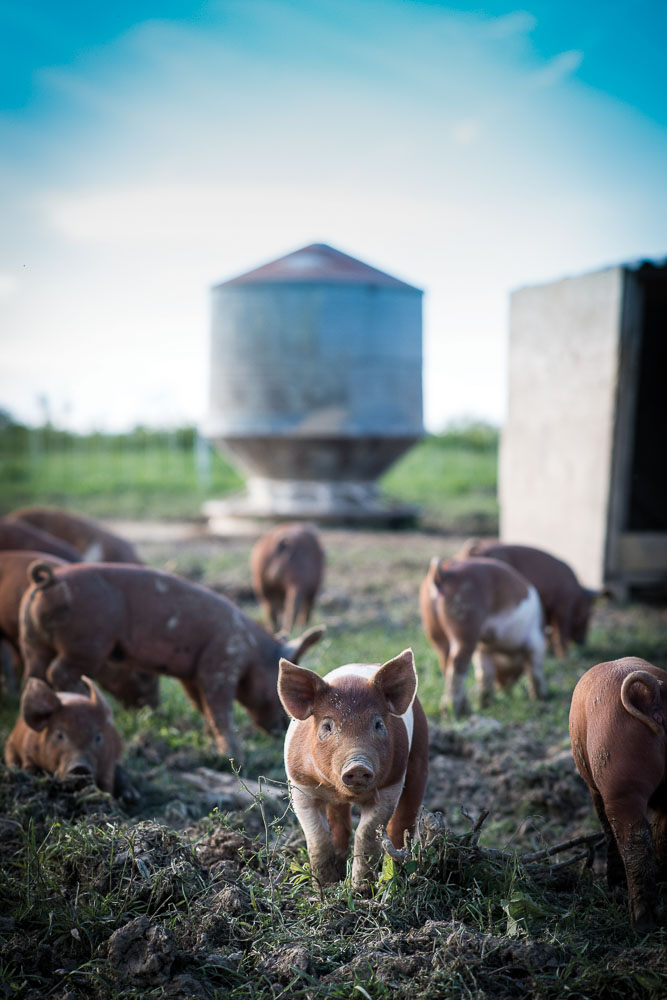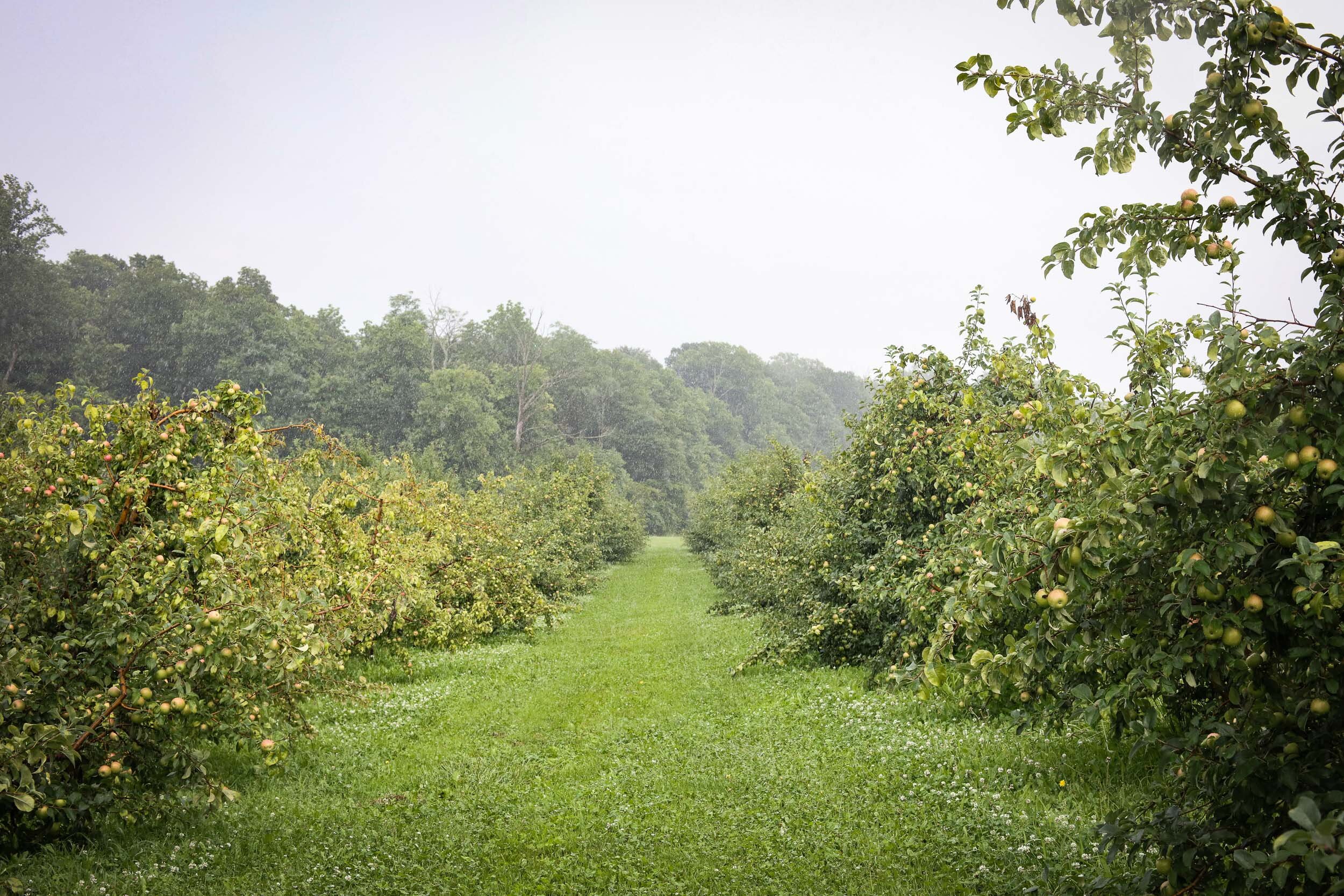Our Local Tropical Fruit

Photos by Julie Kramer
Celebrating the pawpaw: delicious, abundant, and probably growing somewhere close to you.
Around the middle of September, a strange fruit begins to appear in Ohio’s farmers’ markets. Light green, with a blush of black on the skin, and about the size of a potato, the fruit sits in baskets next to more familiar produce, waiting for the curious and a few already smitten lovers.
These unassuming lumps are pawpaws, one of our region’s most unique and, until recently, neglected fruits.
The pawpaw was once common fare in city and countryside—a visitor to Cincinnati in 1886 described whole bushels of them in the markets. As undeveloped land disappeared, though, the pawpaw left most of our diets. To find someone who has tasted one, look to the older generation. My wife’s grandmother had all sorts of pawpaw information for me, and presented widely varying opinions from her friends on whether the fruit was worth eating.
“Sometimes, the exotic is growing right in our backyards, waiting to be noticed.”
Today, more and more people are deciding that it is. Andy Moore, author of the recent book Pawpaw: In Search of America’s Forgotten Fruit, attributes the pawpaw renaissance to several factors: “a renewed interest in older American foodways, a revival of neglected foods, and even a neo-foraging resurgence.”
In September, you’ll find small crowds around the pawpaw baskets in the farmers’ markets, asking what to do with the things. The key to having a good experience, everyone agrees, is to eat the fruit at the right time.
Perfectly Ripe
A ripe pawpaw will be a bit soft and give off a strong smell—citrusy and sweet and tropical. If the smell is faint, or the skin doesn’t give much, let it sit outside for a day or two until it does. A few days past this stage, the fruit will become brown, very soft, and almost cloyingly sweet, a stage that has its own adherents. Most people, though, prefer their fruit firmer.
Cut the pawpaw open lengthwise. You won’t be able to slice all the way through because of its shiny black seeds. Spoon or pick these out—they are easy to find, which is good, because they are a potent emetic.
The grainy whitish flesh on the seeds is OK to eat, but the real treasure is the golden pulp that surrounds the seed area. Scoop some of this with a spoon. Don’t scrape all the way to the edge of the skin, as you would with an avocado, because the layer touching the skin tends to be bitter. The rest of the pulp, though, should be sweet and delicious.
Describing the taste is difficult—mango, banana, and yellow custard are common reference points. There is a whole family of flavors inside a pawpaw, though, and each wild pawpaw I have eaten seems to have its own unique character. If you catch the bug, chances are you’ll treasure the few weeks in September when they’re available.
The Hunt for Pawpaws
My first pawpaw, gathered off the forest floor in Burnet Woods in Clifton, produced a wave of memory: It tasted like a sitaphal, which I had grown up eating in India. Even the seeds looked the same. It turns out that both are members of the Annonaceae, or custard apple, family; the pawpaw just happens to be the only member that figured out how to survive winters in North America.
Over the years, whether remembered or forgotten by local people, it has done much better than survive. “The trees are absolutely abundant in this state,” Andy Moore says, “particularly in Southern Ohio.” Once one learns to recognize the distinctive oblong leaves, one begins to see them everywhere. I found several stands in Burnet Woods and Sharon Woods, two of Hamilton County’s more wooded parks, without really trying.
The hard part of pawpaw hunting is timing, because they ripen, fall, and disappear into the forest floor in about two and half weeks. If you pick one too early, when the fruit is still very hard to the touch, it will never ripen. Get there too late and they will be gone. Mid- to late-September is the usual window, around when you see the goldenrod starting to bloom. If you can reach the fruit with your hand, see if it is a little soft and comes off easily; otherwise, leave it for later. My method was to give the trunk or branch a shake and see what the tree was ready to give up.
Not every year is a good year, and not every pawpaw will bear fruit, but when conditions are right, the trees are hugely generous. Local chefs, brewers, and farmers are beginning to notice the bounty. Although large-scale processing remains tricky—avoiding the bitter edge of the skin and removing the seeds are both challenges—pawpaws are catching on as an ingredient, particularly in beer. “At last count,” Moore says, “there were more than 11 breweries in Ohio alone using pawpaw.”
Using this Local Fruit
Creative ideas abound. In Athens, OH, the heart of pawpaw country, Fluff, a local bakery, carries a pawpaw cheesecake, and the pulp has been added to everything from crème brûlée to bread. It can be cooked into pawpaw butter, or frozen for later use (make sure to squeeze out the air bubbles in your zip-top freezer bag). The easiest thing I have found to do with pawpaw pulp, besides just eating it, is to add it to a smoothie. Andy Moore’s favorite use is ice cream (check out the recipe in the sidebar).
If you want not only ice cream, but every kind of pawpaw product, plus pawpaw-themed music, art, and festivities, head to Albany in Athens County, OH, from September 16–18 for the 18th Ohio Paw Paw Festival. Growers will also be showing off the new domesticated varieties of the fruit. Highly pest- and disease-resistant, pawpaws trees are increasingly popular among people looking to add edible perennials to their land. (Moore’s book contains a helpful list of cultivars and nursery sources.) I have yet to try a cultivated pawpaw, but they are reported to be much larger, with more pulp, fewer seeds, and a consistently delicious flavor.
Eventually, these commercial pawpaws will surely end up in our grocery stores. With their small window of ripeness (followed by complete putrefaction), they can be a challenge to ship and stock, but cultivators throughout the country, and particularly in Ohio, are developing varieties to overcome these challenges.
In the meantime, you can find the wild kind on the Shagbark Farm table at the Hyde Park Farmers’ Market, and on several tables at the Northside Farmers’ Market, including Carriage House Farm. Or you can go for a walk in a local park or forest—my advice is to look for slopes of land close to water.
However you find one, the pawpaw is a valuable reminder that we do not need to have products shipped to us from around the world for the sake of variety. Sometimes, the exotic is growing right in our backyards, waiting to be noticed.
The leaves of the pawpaw (sometimes called paw paw or paw-paw) tree are large, about 10 to 12 inches long, and arranged at the ends of the branches. Since the trees reproduce by root suckers, they tend to cluster in colonies; where you find one tree, you’ll find others nearby. In September, forage in local forests for ripe pawpaws.
Akshay Ahuja grew up in New Delhi and the suburbs outside Washington, DC, and now lives in College Hill in Cincinnati with his wife and son. His writing often appears in Cincinnati Magazine and The Dark Mountain Project. He loves playing with soil and words, and writes about food, plants, and the arts in their various wild and domesticated forms.








